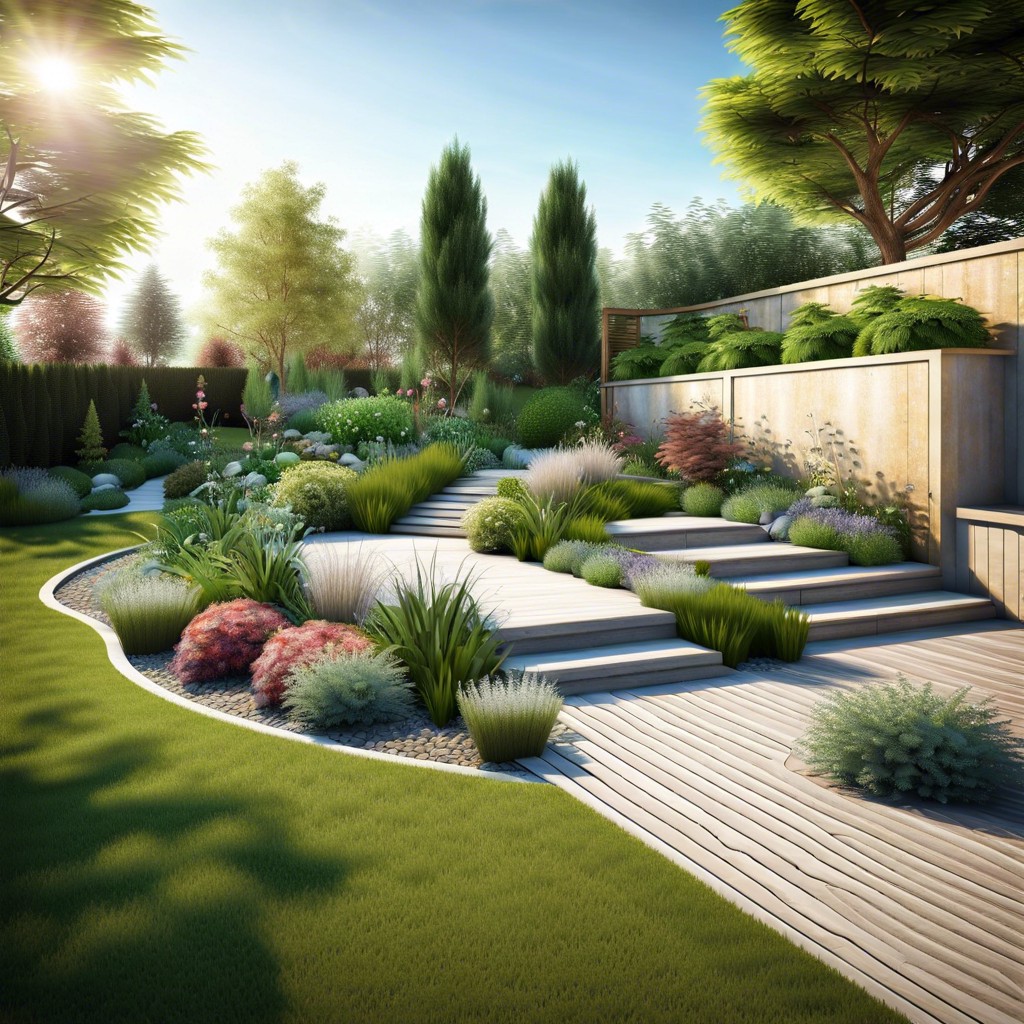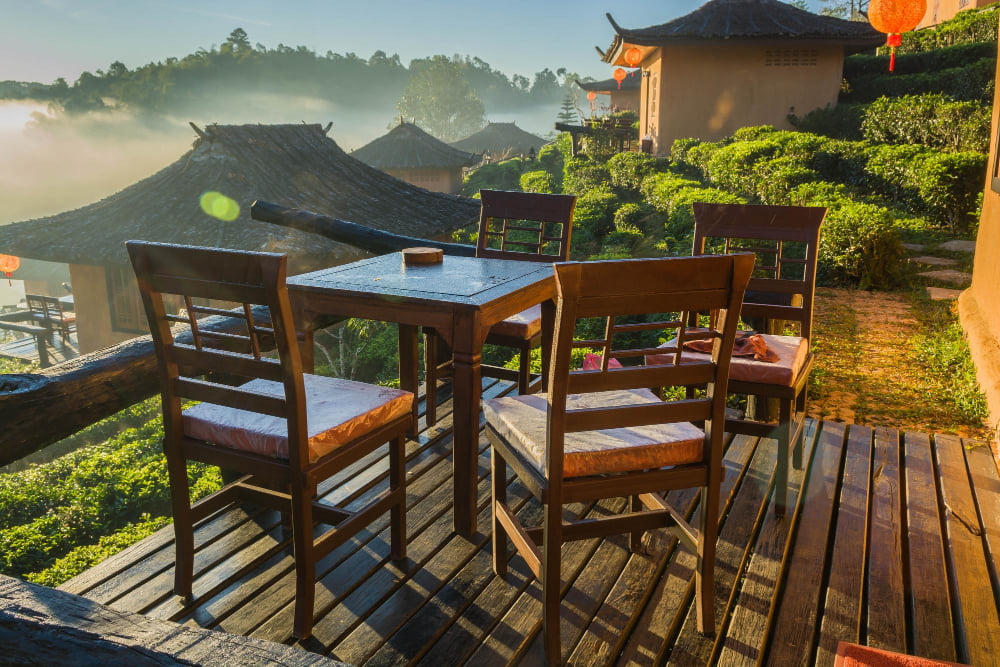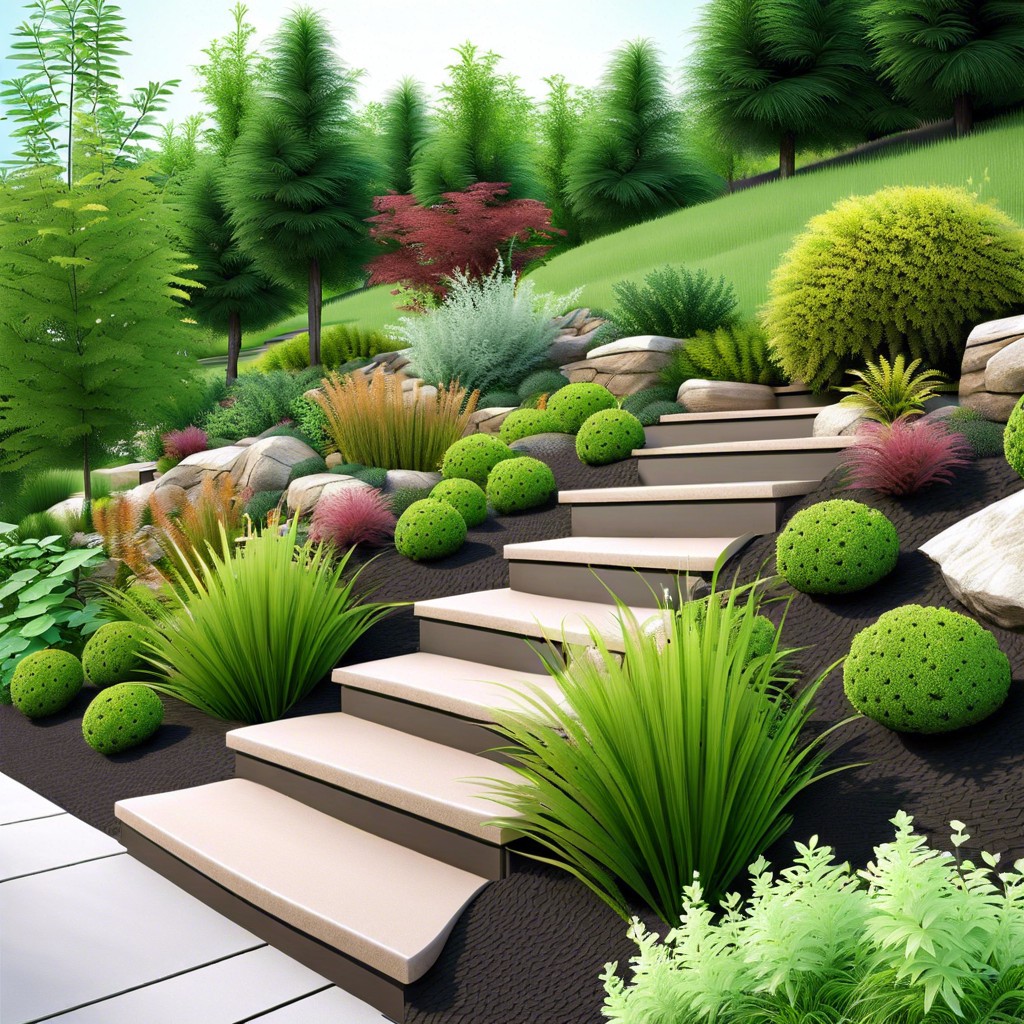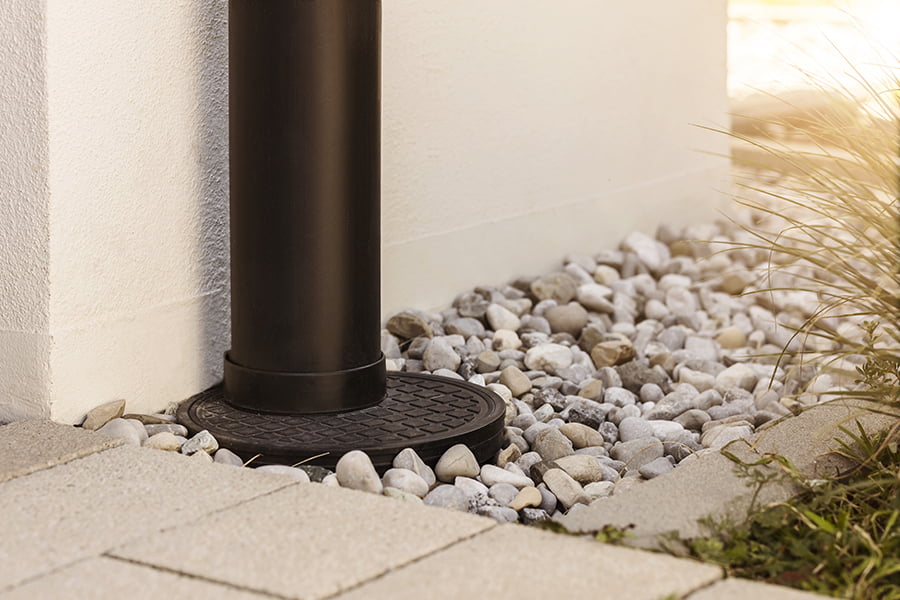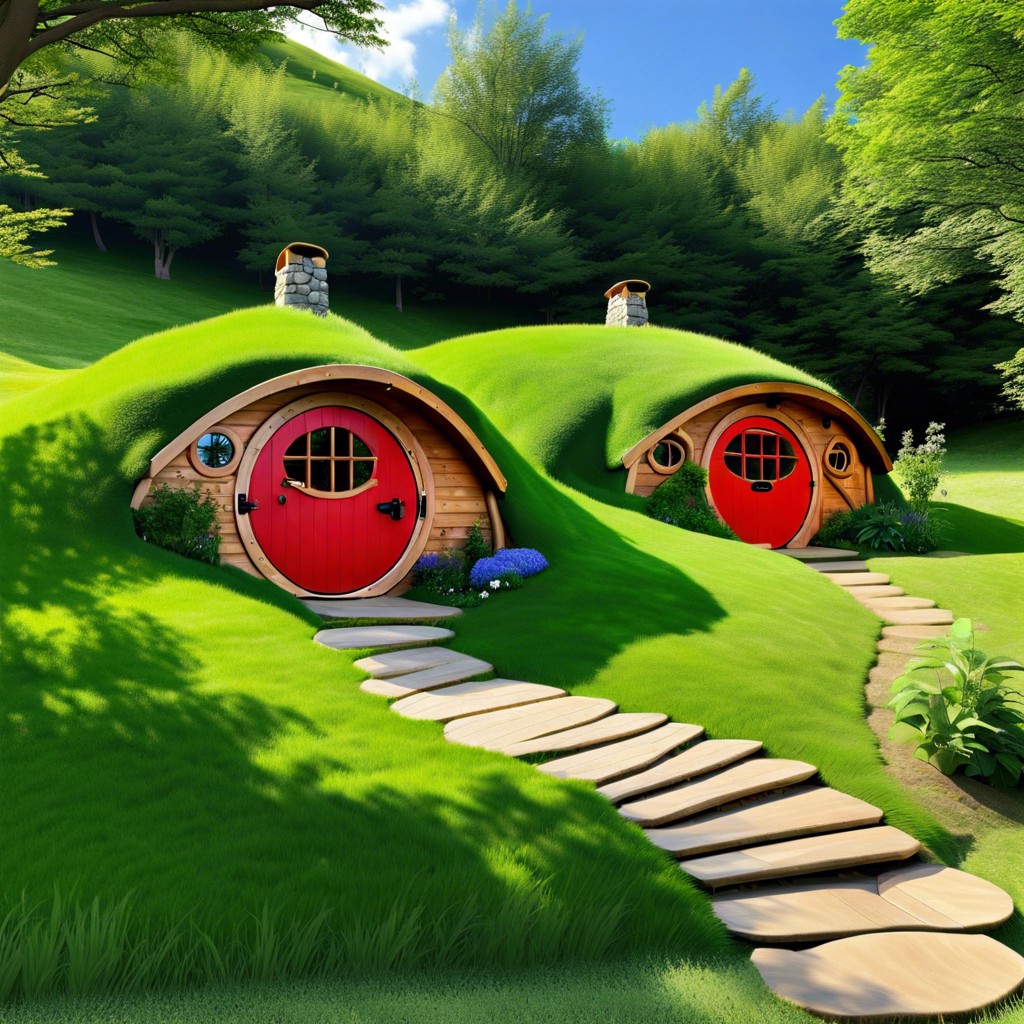Discover practical strategies and creative ideas for transforming your sloping garden into a stunning and functional hillside landscape.
Key takeaways:
- Evaluate your slope: Consider soil, sun exposure, erosion, and accessibility.
- Ensure proper drainage: Assess water flow, soil type, and implement retention systems.
- Consult a professional: Seek guidance from landscape architects for expertise and compliance.
- Draw up a design: Plan walkways, retaining walls, and plant selection.
- Choose a style: Consider formal terracing or naturalistic themes that fit your personal style.
Evaluate Your Slope
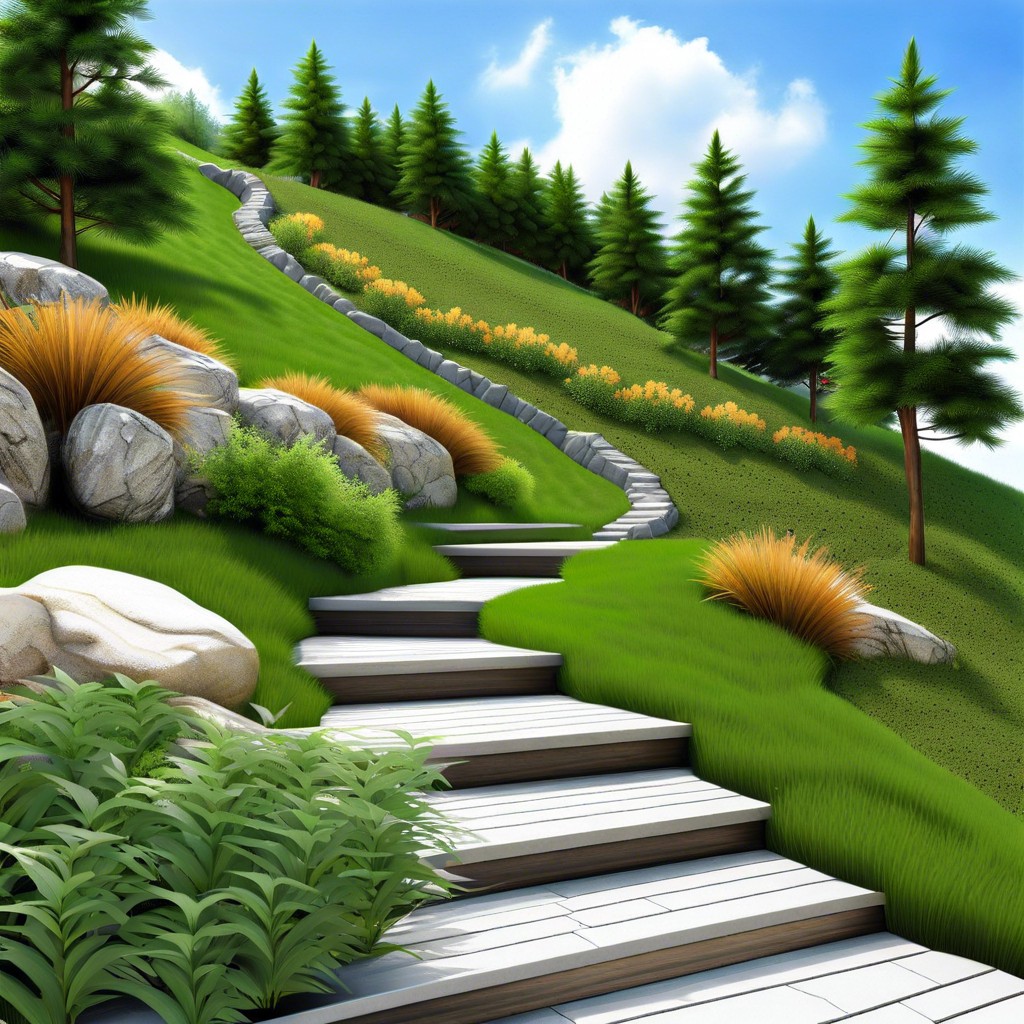
Understanding the incline of your yard is the first step towards creating a successful hillside landscape. A gentle slope can offer more straightforward options for planting and maintenance, whereas steeper inclines will require additional measures to ensure soil stability and plant health.
Consider the following:
- Soil Composition: Knowing whether you have sandy, clay, or loamy soil will influence water retention and plant choice.
- Sun Exposure: Observe how sunlight falls on the slope throughout the day as this will dictate what types of plants will thrive in the environment.
- Erosion Potential: Steepness and soil type play into how prone your slope is to erosion. Identifying areas at risk can help in designing interventions like retaining walls or terracing.
- Accessibility: Think about how you’ll navigate the slope for maintenance—will you need steps, pathways, or handrails to work within your garden safely?
By taking the time to evaluate the unique characteristics of your slope, you’ll be well-positioned to tackle the next steps in your hillside landscaping project.
Consider Drainage
Ensuring proper drainage is crucial in hillside landscaping to prevent soil erosion and protect your property’s foundation. Here are some points to help you understand the process and importance:
- Water Flow Assessment: Observe how water naturally moves down your slope. Noting these patterns will inform where you may need to implement drainage solutions or redirect water flow.
- Soil Type Analysis: Different soils absorb and drain water at varying rates. Sandy soil, for example, drains quickly, while clay retains moisture. Plan for features that accommodate your specific soil type.
- Retention Systems: Consider terraces or retention walls to help manage the water flow, reduce speed, and prevent the downhill movement of soil. These features can act as barriers, slowing down the water and allowing it to seep into the soil gradually.
- Plant Selection: Choose plants that suit your drainage needs. Deep-rooted plants can help stabilize the soil and assist with water absorption, while water-loving species can thrive in areas where water collects.
- Drainage Installations: In instances of severe slopes, installing French drains, dry creek beds, or directing downspouts away from vulnerable areas could be necessary. These systems help channel water away from your landscape to prevent damage.
- Regular Maintenance: Inspect your drainage systems frequently, especially after heavy rainfalls, to ensure they remain unclogged and functional. A well-kept landscape will be more resilient against erosion.
By prioritizing drainage in your hillside landscape project, you enhance the longevity and beauty of your outdoor space while protecting the local ecosystem.
Consult a Professional
Seeking the expertise of a landscape architect or a professional experienced in hillside landscaping can make a significant difference in the success of your project. These specialists understand the unique challenges that slopes present, such as soil erosion and water runoff, and can offer solutions that are both functional and aesthetically pleasing.
They can help assess the stability of your hillside and determine what kind of plants, trees, and structures will best support the terrain. Plus, professionals are knowledgeable about local building codes and regulations, which is essential in ensuring that any structural elements, like retaining walls or terraces, are compliant and safe.
Moreover, a professional can assist with identifying the right materials that will blend seamlessly with your natural surroundings while providing the durability needed for a sloped environment. This guidance is particularly valuable if you aim to merge beauty with sustainability, as they can suggest native plants that require less maintenance and conserve water.
By collaborating with a professional, you gain access to their expertise in planning and executing a design that works with, rather than against, the natural incline of your property. This partnership is not just about avoiding common pitfalls; it’s an investment in creating a hillside garden that thrives for years to come.
Draw Up a Design
Having assessed your slope and taken professional advice into account, it’s time to put pen to paper or cursor to CAD. Your design should translate the vision you have for your hillside into a practical guide that incorporates all the elements you wish to include. Start by outlining your primary features, such as walkways, retaining walls, steps, and patios.
Consider circulation patterns: how will someone navigate through the space? Account for accessibility and ensure paths are designed with a gentle incline where possible. Think about resting points or areas to enjoy views, incorporating benches or lookout points in your scheme.
When sketching planting areas, imagine how the plants’ colors, sizes, and textures will blend to create a cohesive appearance year-round. Be intentional with plant selection, focusing on deep-rooted species for stability and those that are drought-resistant if water drainage is a challenge.
Remember the practical aspects as well, like areas for water to flow or be absorbed to prevent erosion. Detail where rain gardens or dry creek beds, if applicable, will be situated for managing water runoff effectively.
Above all, your design should fuse functionality with aesthetics, creating a hillside landscape that is both stunning to behold and sustain throughout the seasons.
Choose a Style
Creating a visual theme for your hillside project can unify the space and reflect your personal style. The design aesthetics can range from formal terracing that brings a sense of structure to a more naturalistic, wildflower-strewn slope that blends seamlessly with the surrounding landscape. When picking a direction, consider the architecture of your home and the existing vegetation to ensure cohesiveness.
For a more manicured appearance, geometric patterns with hedges or structured garden beds can highlight the slope’s contours. Alternatively, a cottage garden with an array of perennials offers bursts of color and a relaxed feel that can soften the hill’s gradient.
Using local stone to create pathways or retaining walls not only adds natural beauty but also helps integrate the landscaped hillside with the local environment. In contrast, for a modern edge, incorporating sleek materials like metal or incorporating minimalist plant choices creates striking visual interest.
The trick lies in the balance – too much conformity might overwhelm the hill’s natural features, while too much randomness can lead to a lack of focus and visual confusion. By seamlessly blending your chosen style with practical considerations like accessibility and erosion control, your hillside landscape will not only look attractive but will also be sustainable and functional.
